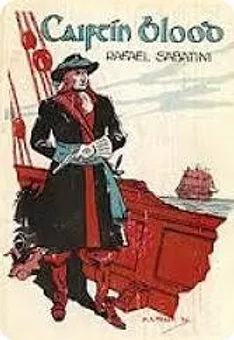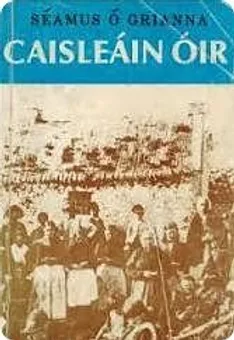



Séamus Ó Grianna 1889 – 1969
“He was, in fact, the first Irish language novelist, and it is unlikely that there has been any Irish language writer since then who has published so many books with him,” says Máirín Nic Eoin in An Litríocht Réigionach (1982). Agus Séamus Ó Searcaigh Agus dúirt Nua-Sgríbhneoirí na Gaedhilge in Lectures Colmcille 1974 Ple Thomas wrote: “If the day ever would come to be lost every historical source from RInn na Feirste in the late 19th century… a work on the history of Cape Fast in that age could be recreated from Mary’s books as complete as what was lost, and much more vibrant, interesting and humane ”. It must also be said, however, that the critics are almost unanimous that, despite his disdain for the beauty of his prose and other good qualities of his writing, he did not live up to the great promise of the early 1920s and did not freshness, development, and deep ideas are to be found in his work. Father Seán Ó Gallchóir has a long essay on it in Scríbhneoireacht na gConallach , 1990, edited by Nollaig Mac Congáil.
Séamus was born in Tón an Bhaile, Rann na Feirste, Co. Galway . Donegal , on 17 November 1889. The birth was not registered until February and, according to his family, the birth certificate is erroneous, says 12 February 1890. Féilimí (Daniel Francis) Greene, who had some land poor him and a boat, his father. It would appear from an essay by Niall Ó Dónaill in Comhar , July 1981 (“I would not distort his own name, despite his descent from Clann Mhic Ghrianna”) that his surname was ‘Mac Grianna’. His mother was Máire (Eibhlín Néillín) Ní Dhónaill. She is the sister of the famous storyteller Johnny . Séamus Ó Grianna said about Féilimíin Rann na Feirste (1942): “My father is the best storyteller I have ever heard. He is the best Irish speaker I have ever heard ”. And he stated in When I Was Young (1942): “The people who came before me on my mother’s side sang songs and poems as well as they did in Ireland during his time”. There were ten other children in the family. James was the fourth oldest. And he was the oldest boy, which made him a pet. Nollaig Mac Congáil in Scríbhneoirí Tír Chonaill thinks that this was very much related to the difference between him and his brother Seosamh Mac Griannaas writers. Joseph was 12 years younger (born 15 January 1901. According to the birth certificate, his parents were “Philip Green” and “Mary O’Donnell”. He was thought to have been born in August 1900. See note by Liam Doherty in Write 5, p. 240.)
It was in national school that he was 13 years old. In an examination he conducted at Dungloe for two years fee-free at Mount China College he failed to answer the questions asked about “Lycidas”. He was “employed” in Tyrone when he was 14 years old. For £ 4 he was to stay from May to November but he only stayed a night or two he was so homesick. A week he stayed the following year. Two years later and every year for three years he worked the harvest in Scotland, thinning turnips and harvesting berries and potatoes in the first two rounds and navigating the water pipe between Broughton and Edinburgh for the third year. .
He won first prize for three stories from folklore at the 1912 Oireachtas. In March of that year in An Lóchrann he published his first essay. He had the name “Mary”. He spent the period 1912–14 at St. Patrick’s College , Drumcondra. He obtained the highest mark in English in the final examinations. Father Matthew Maguidhir gave him his first job in Kilskeery, Tyrone, because he is a native Irish speaker. It was there when the First World War broke out. He later taught in Inishfreagh and Letterkenny in Donegal. He completed two courses at Ulster College in Gortahork and qualified as an Irish teacher. He traveled part of the country as a timer for the First Dáil. According to him he failed. The Munster people thought he spoke Connacht Irish and they didn’t understand it. The Connacht people thought he was speaking Munster Irish. The Ulstermen didn’t understand it because they spoke Ulster Scots!
When the Civil War broke out he sided with the Republic and spent 1922–24 imprisoned in Newbridge. He had three brothers with him in the same prison at the same time. He was appointed Secretary of the Fáinne organization in 1924 and from then on lived in Dublin , with the exception of a year spent in Menton in the south of France for health reasons. He had bronchitis due to his time in prison. He was learning French at Berlitz school for a while before leaving for France. He was appointed a member of the committee to reform Conradh na Gaeilge in January 1925 but was unable to attend the meetings. From 1926 to 1929 he was editor of. Magazine Fáinne an Lae. For free he did that work. He resolved not to pay any attention to the Business Committee and wrote a whole edition only knowing that they would not accept it. Writing about that period, Aindrias Ó Muimhneacháin says in Dóchas agus duainéis: make a mockery of the person or the thing he did not like ”.
It was at this time that he began translating books for Gúm. He spent some time at Neil O’Donnell’s house on the North Circular Road and the two of them competed together to see who was the quickest to move. He got a job in the civil service when Fianna Fáil came to power in 1932. In Ulster , Vol. 13, no. 2 (1936) says: “I am in the ribbons now”, referring to his work as a Customs and Excise Officer and his experience of pottery making long before that. He was on the dictionary team of Baldraithe and O’Donnell before retiring in 1966. He joined the Language Freedom Movement founded in that year, a sign of his service to the revival. He wrote a letter to Comhar on 6 January 1968 refusing to allow them to republish anything and saying that it was unfortunate that he had never written a word (printed in Comhar, December 1969). He flatly rejected the spelling or use of standard grammar and was against the Roman font. After his death, Niall Ó Dónaill was granted permission to edit his books for a generation of readers who did not use the old Irish spelling or type, provided that he adhered faithfully to Séamuis’ Irish and did not distort it. .
The two most popular books are Mo Dhá Róisín (1921) and Caisleán Óir (1924), and Cith is Dealán (1927), a collection of short stories. He wrote 27 original books as well as the books he translated. Original books by him include: Micheál Ruadh , 1925; Arbor League , 1927-c.1930; Fera Fáil , 1933; West in Donegal , 1940; Rann na Feirste , 1942; The alphabet by Cadmus , 1944; A Wrong World , 1945; A new story and an old story , 1946; The house not built , 1948; From heaven to Aran , 1953; Program and staff , 1955; Sod of death , 1955; Beach and flood , 1955; Silk robe , 1956; Missionary Prophecy , 1958; The Druid , 1959; The flag , 1959; From sea to mountain , 1961; Úna Bhán , 1962; The Eagle Supper , 1963; Back to sea , 1963; Red Lady of Dálach , 1966; Le clap-sholus , 1967; The old text h , 1969; Summer night and other stories , 1968; Destiny 1 , 1993; Cora cinniúna 2 , 1993. His translations include: Ireland and the Irishmen in the French Revolution , 1933 ( by Richard Hayes ); Under a smolt tree , 1935 ( La terre qui meurt by René Bazin); Captain Blood , 1937 ( Captain Blood by Rafael Sabatini); The Way Achtuighthe 1938 ( The right of way Gilbert Parker); Lisin , 1940 ( Lisheen with Canon Patrick Sheehan); The queen filet , 1940 ( The Queen’s fillet with Canon Patrick Sheehan); In Inis Tuile , 1953 ( Pecheur d’Islande by Pierre Loti). A program that works in print Nollaig Mac Congáil in the tUltach April 1981. He composed some poems and songs too. He composed “Up in the middle of the valley” (Ulster, Christmas Number 1926).
Another famous brother was Seán Bán Mac Grianna who wrote Ceoltaí agus seanchas (1976). He died in March 1979 and Pádraig Ó Baoighill has an account of his life on Today 23 March 1979. It is said that he and his sister Anna inherited all the legends from their father because they remained at home.
James was married to Mary Ellen (“Connie”) McDonnell of Abbeyleix . They had eight children. 25 Griffith Avenue, Dublin, their dwelling house. He died on 27 November 1969. His friend Niall Ó Dónaill said of him in that essay in Comhar : “He made his language more accurate than any other writer from the Donegal Gaeltacht in his day, and he taught the rest of us Shaping Irish Gaelic from our native dialect ”. In the Focus radio program broadcast immediately after his death, Máirtín Ó Cadhain said that Máire was the writer of the Gaeltacht par excellence and that it was no exaggeration to say that he taught something to the rest of them from the Gaeltacht – which decided on Ó Conaire , on the Pearse and Father Peter – that is, that literature could be made out of the speech and the world from which they themselves were squeezed. In November 1989, one hundred years after his birth, Féile “Mháire” was held in Rann na Feirste and biographical essays were published in Anois (19 November) by Risteárd Ó Glaisne and Dr Damien Ó Muirí, and in Feasta by Risteárd Ó Glaisne. On 28/9 December 1989 Raidió na Gaeltachta broadcast a documentary written and presented by Pól Ó Gallchóir. 1989 also saw the publication of a program of oral results in Green ‘s work by Ailbhe P. Curran. And in 1990 he published Coiscéim Máire: a program of work by Nollaig Mac Congáil.
Diarmuid Breathnach
Máire Ní Mhurchú
Full information above taken from the site: http://www.ainm.ie/Bio.aspx?ID=203
The Works of James
My Two Roses (1921) novel
Castle of Gold (1924) novel
Micheál Ruadh (1925)
Cith is Dealán (1927) a collection of short stories
Branch Series iv, v, (vi x2) 1927-c.1930
West of Donegal (1940)
Rann na Feirste (1942)
The Alphabet by Cadmus (1944)
When I was Young
A Curious World (1945)
A New Story and an Old Story (1946)
The Unbuilt House (1948)
From Heaven to Aran (1953)
Program and Staff (1955)
Sod of Death (1955)
Beach and Flood (1955)
Silk Gown (1956)
Missionary Prophecy (1958)
The Druid (1959)
The Flag (1959)
From Sea to Mountain (1961)
Úna Bhán (1962)
The Eagle Supper (1963)
Back to Sea (1963)
Bean Street of Dhalach (1966)
The Clap-Sholus (1967)
An Sean-Teach (1969)
Destiny 1 (1993)
Destiny 2 (1993)
Translations of Jame's
Ireland and the Irish in France Muirthéacht 1933 Ireland and Irishmen in the French Revolution by Richard Hayes
Faoi Chrann Smola 1935 The land that dies by René Bazin
Caiftín Blood , 1937 Captain Blood the Rafael Sabatini
The Enacted Way , 1938 The right of way by Gilbert Parker
The Queen’s fillet , 1940 The Queen’s fillet with Canon, Patrick Sheehan
Iascaire Inis tuile 1953 Galion’s the Pierre Loti
